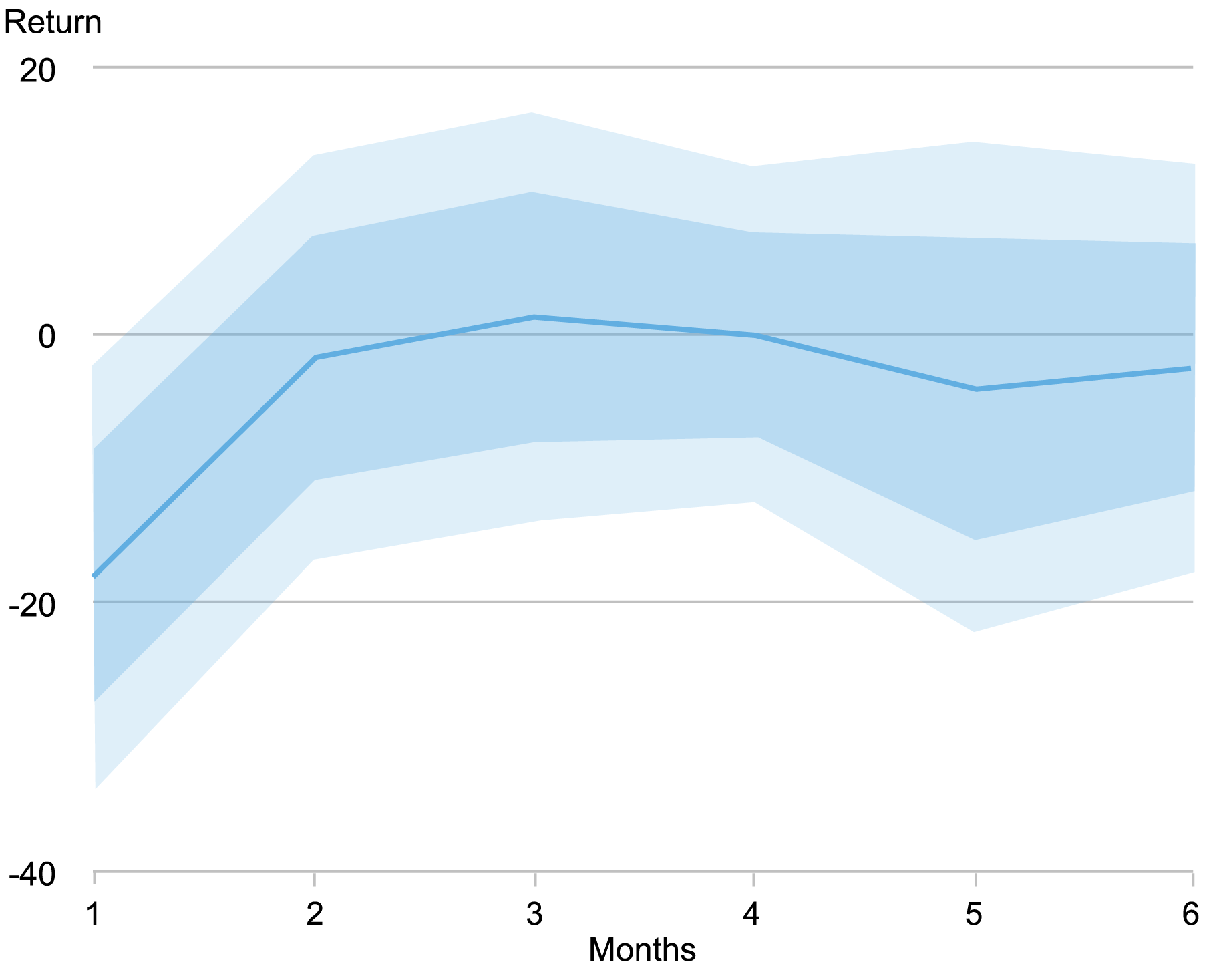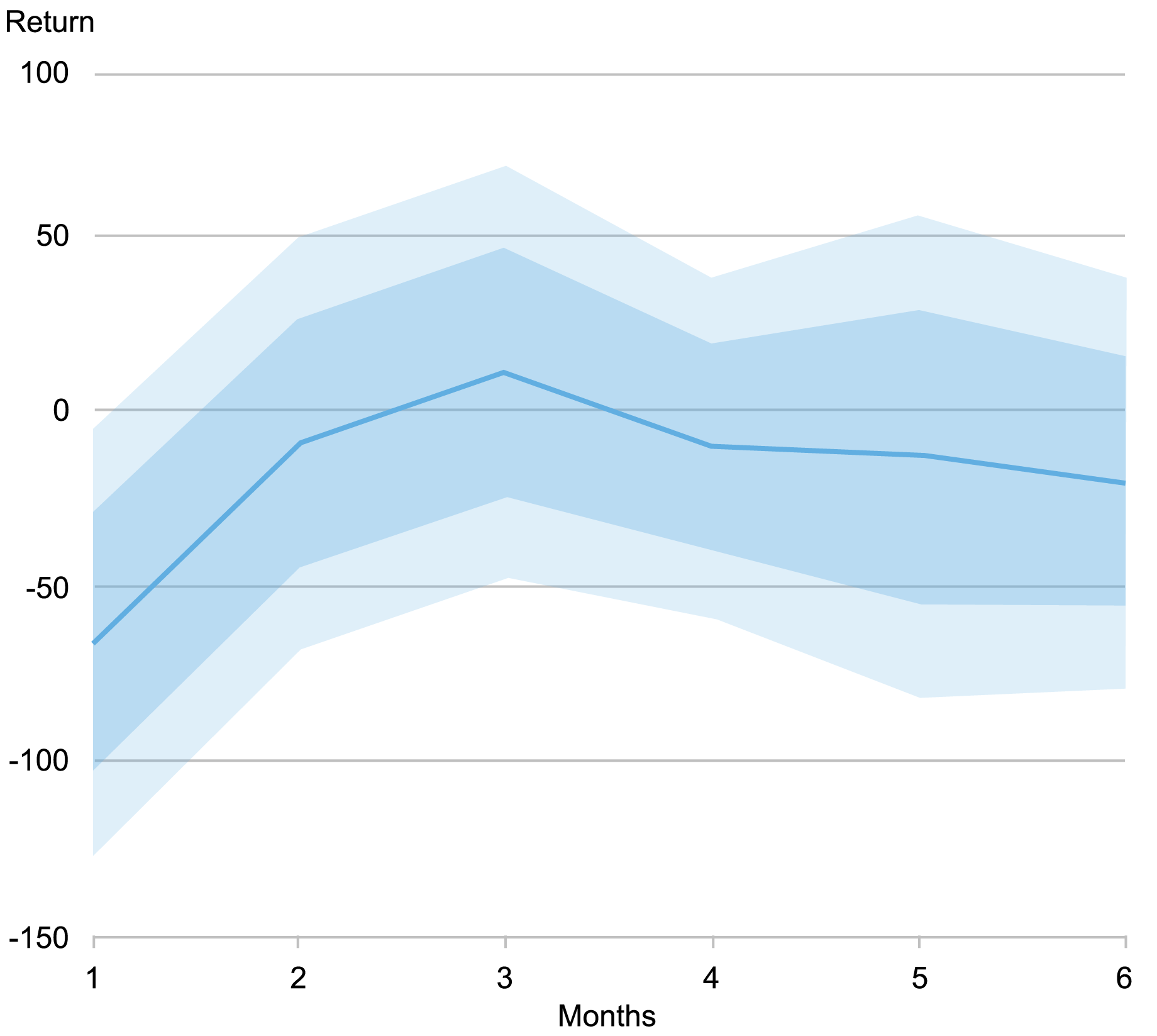International Stock Markets’ Reactions to EU Climate Policy Shocks


While policies to combat climate change are designed to address a global problem, they are generally implemented at the national level. Nevertheless, the impact of domestic climate policies may spill over internationally given countries’ economic and financial interdependence. For example, a carbon tax charged to domestic firms for their use of fossil fuels may lead the firms to charge higher prices to their domestic and foreign customers; given the importance of global value chains in modern economies, the impact of that carbon tax may propagate across multiple layers of cross-border production linkages. In this post, we quantify the spillover effects of climate policies on forward-looking asset prices globally by estimating the impact of carbon price shocks in the European Union’s Emissions Trading System (EU ETS) on stock prices across a broad set of country-industry pairs. In other words, we measure how asset markets evaluate the impact of changes to the carbon price on growth and profitability prospects of the firms.
The EU ETS and Climate Policy Shocks
The EU ETS is based on a “cap and trade” principle, where firms are faced with a set limit (the cap) on the amount of greenhouse gases they can emit in a given year. The cap is expressed in tons of CO2-equivalent, and firms can bid on allowances to have larger limits via a centralized auction system. These allowances are then traded on the EU ETS market, thereby setting a market price for carbon emissions.
Empirical Strategy
To estimate the impact of a carbon shock emanating from the EU ETS on international stock markets over 2005-2019, we combine annualized monthly country-sector (U.S. dollars) stock returns data for twenty-six countries with the carbon shock time series. We hypothesize that a policy announcement that leads to an unexpected increase in carbon prices will have a negative impact on stock returns, as an increase in carbon prices will raise the cost of production for firms within the EU and these costs will be passed on through input prices across global input-output linkages. After demonstrating a negative impact of carbon shock on global stock prices, we test for this hypothesis by making use of the global production network data from the World Input-Output Database (WIOD), as in some of our previous work.
Kanzig (2023) exploits policy announcements concerning the EU ETS since its inception in 2005 to identify policy “surprises” that affect carbon prices via supply-side forces (for example, the tightening of allowances). He follows the common approach used to identify monetary policy shocks that relies on price changes in futures markets around announcements. These price change surprises are used to construct the shock series that enter our regressions discussed below.
We consider two climate shock series in our regressions. The first is the raw series, which, following Kanzig (2023), is normalized such that a one standard deviation change in the shock corresponds to a one percentage point change in the energy component of the EU’s CPI on impact. This shock only takes values of one for targeted industries in the EU, which we refer to as “dirty” EU sectors (labeled as such if they are in the top 10 percent of emissions-to-output ratio across all EU country-sector pairs as of 2014, such as utilities and transportation sectors and some heavy manufacturing).
The second shock series weights the raw carbon surprise series by each country-sector’s intermediate input usage originating from “dirty” EU sectors as a ratio of the country-sector’s total production. This weighted shock then varies across country-sectors, as well as over time, and is meant to capture the relative importance of direct supply chain linkages of a given country-sector with the sectors that are directly affected by climate policy shocks in the EU ETS.
In addition to the climate shock variable, we include in our empirical analysis changes in the VIX, the broad U.S. dollar index, and the U.S. two-year Treasury rate, as these variables are also expected to influence stock returns.
Baseline Results
The chart below presents the monthly impact of the raw climate shock on stock returns in the average country-sector, where we include one (dark blue) and two (light blue) standard deviation bands. A positive innovation in carbon prices has an immediate negative impact on stock returns in the first month. This impact is not long-lived, only being statistically significant in the first month, but it is also not reversed subsequently. The magnitude of the impact implies that the largest carbon price shock observed in the series (which corresponds to a 0.02 percentage point change in the energy component of the EU’s CPI on impact) leads to a 37 percent decline in annualized monthly stock returns worldwide on average (which is about one-half of an average monthly return and about 17 percent of monthly stock returns deviations).
The Effect of the Carbon Policy Shock Is Significant on Impact

Sources: Authors’ calculations based on carbon price shocks from Kanzig (2023) and stock market returns data from Refinitiv Global Equity Indices database.
The chart below explores how much of the effect is due to input-output linkages that transmit carbon shocks to foreign stock markets. The chart presents the impulse response of stock returns to the carbon shocks as defined above but weighted by the volume of inputs from the “dirty” EU sectors. The dynamics are similar to those for the raw shock series, in that the majority of the impact of an unexpected increase in stock prices accrues immediately and is not offset over time. Quantitatively, the largest observed weighted carbon shock leads to about a 33 percent decline in stock returns. That is, nearly all of the effect we previously observed is due to the linkages through trade in intermediate goods.
Input-Output Linkages Play a Role in Propagating the Carbon Price Shock

Sources: Authors’ calculations based on carbon price shocks from Kanzig (2023), stock market returns data from Refinitiv Global Equity Indices database, and data from the World Input-Output Database.
Conclusion
This post presents some early evidence on the spillover of domestic climate policy on foreign stock markets, based on the case of EU ETS. Our work complements recent studies by Bolton and Kacperczyk (2023) and Bolton, Lam, and Muûls (2023) that examine the impact of climate policies on domestic markets. By exploiting unexpected changes in carbon prices, we show that while there are sizable spillovers, they are not particularly large in the context of stock return volatility. Moreover, while the effects are not offset in the following months, they do not persist beyond the month of the impact. In ongoing work, we are further investigating the importance of specific trade linkages in the transmission of carbon shocks across stock markets and other determinants of cross-sectional differences in the impact that we observe in the data. Stay tuned.

Julian di Giovanni is the head of Climate Risk Studies in the Federal Reserve Bank of New York’s Research and Statistics Group.

Galina Hale is a professor of economics at the University of California, Santa Cruz.

Neel Lahiri is a former research analyst in the Federal Reserve Bank of New York’s Research and Statistics Group, and currently a graduate student at the University of Chicago.

Anirban Sanyal is an assistant advisor in the Reserve Bank of India’s research group.
How to cite this post:
Julian di Giovanni, Galina Hale, Neel Lahiri, and Anirban Sanyal, “International Stock Markets’ Reactions to EU Climate Policy Shocks,” Federal Reserve Bank of New York Liberty Street Economics, October 10, 2024, https://libertystreeteconomics.newyorkfed.org/2024/10/international-stock-markets-reactions-to-eu-climate-policy-shocks/.
Disclaimer
The views expressed in this post are those of the author(s) and do not necessarily reflect the position of the Federal Reserve Bank of New York or the Federal Reserve System. Any errors or omissions are the responsibility of the author(s).





